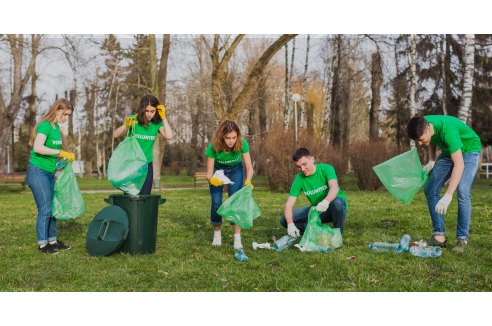Living with hoarding disorder presents real challenges that affect both physical spaces and emotional well-being. Many people struggle with letting go of possessions, leading to spaces that become increasingly difficult to manage over time. While the path to reclaiming living spaces may seem overwhelming, creating a structured and sustainable decluttering plan can make a significant difference.
The key to success lies in understanding that hoarding isn’t simply about having too many items – it’s a complex situation that requires careful consideration of both practical and emotional aspects. Traditional quick-fix solutions often fall short because they don’t address the underlying patterns and needs of the person dealing with hoarding tendencies.
Hoarding: Beyond The Clutter
Emotional Attachments and Decision-Making
People with hoarding tendencies often form deep emotional connections to their possessions. Each item might represent a memory or potential future use, and deciding to discard anything is extremely challenging. This emotional connection, combined with the fear of making wrong decisions, leads to keeping items “just in case” or postponing decisions indefinitely. The result is a continuous cycle of accumulation that becomes increasingly difficult to address.
Impact on Daily Living
As possessions accumulate, they significantly affect basic daily activities. Kitchen spaces become unusable for cooking and food preparation, while bedrooms may no longer function as proper sleeping areas. These changes impact not just the physical space, but also the person’s ability to maintain normal daily routines. Basic cleaning and maintenance tasks become increasingly difficult, creating a cascade effect that touches every aspect of home life.
Health and Safety Concerns
Severe hoarding often creates serious safety risks that need immediate attention:
- Blocked exits and unstable stacks pose immediate physical dangers
- Poor air quality and limited cleaning access affect respiratory health
- Pest problems develop in areas that become inaccessible
Understanding these fundamental aspects of hoarding helps explain why quick cleanouts or forced decluttering rarely lead to lasting change. Successful intervention requires a thoughtful approach that addresses both the physical clutter and the underlying patterns that create it.

Creating a Workable Assessment Plan
Safety First: Initial Evaluation
Before beginning any decluttering work, evaluating safety concerns is essential. Check for blocked pathways, unstable piles, and potential fire hazards. Cleaning Services For Hoarders often start with this crucial safety assessment to identify areas needing immediate attention. This step ensures that any decluttering work can proceed safely for everyone involved.
Setting Achievable Goals
The most successful decluttering plans start with small, manageable goals. Instead of trying to tackle an entire home at once, focus on creating safe pathways or clearing one small area. These initial successes build confidence and momentum for larger tasks ahead. Work with the person to identify which areas cause the most daily stress or present the biggest safety concerns.
Professional Support Considerations
Professional support often makes a significant difference in the decluttering process. Mental health professionals can help address underlying concerns while organizing experts who bring practical experience to the situation. The key is finding professionals who understand hoarding behaviors and can provide compassionate, non-judgmental support throughout the process.
Need Hoarding Cleanup? We’re Just a Call Away
& Ready to Respond Quickly!

Building an Effective Support System
Family and Friend Involvement
Close family members and friends play a crucial role in the decluttering process. However, their involvement needs careful management to prevent overwhelming the person dealing with hoarding. Teach supporters to offer encouragement without judgment and help them understand that quick fixes rarely lead to lasting change.

Professional Assistance
Professional help often provides the structure needed for successful decluttering. Cleaning Services For Hoarders brings specialized experience and equipment to handle challenging situations. They understand the emotional aspects of the process and work at a pace that feels comfortable for the client. Additionally, professional organizers can help create systems that prevent future clutter accumulation.
Team Communication
Clear communication between all support team members ensures everyone works toward the same goals. Regular check-ins help track progress and adjust strategies as needed. This coordinated approach prevents conflicting messages and maintains consistent support throughout the decluttering process.
Practical Decluttering Strategies
The Four-Category System
Start by establishing a simple sorting system that makes decisions clearer and less overwhelming. Rather than making immediate keep-or-discard decisions, use four basic categories: keep, donate, discard, and review later. This approach reduces pressure and makes the sorting process more manageable. Keep the “review later” pile small to prevent it from becoming another source of clutter.
Room-by-Room Progress
Working through spaces systematically helps maintain focus and prevents feeling overwhelmed. Start with less emotionally charged areas like bathrooms or laundry rooms. These spaces often contain fewer sentimental items, making them good practice areas for decision-making skills. Success in these areas builds confidence for tackling more challenging spaces.
Managing Emotional Attachments
Emotional connections to items present some of the biggest challenges in decluttering. Take time to acknowledge these feelings while gently challenging the need to keep every item. Consider taking photos of sentimental items before letting them go, or keeping one representative item from a collection instead of the entire set.
Implementing Sustainable Cleaning Solutions
Establishing Cleaning Routines
Start with basic cleaning routines that feel manageable and sustainable. Professional support through Cleaning Services can help establish these initial routines and provide guidance on maintaining cleared spaces. Focus on simple daily tasks that prevent clutter from returning:
- Immediate mail sorting and paper management
- Daily surface cleaning in cleared areas
- Regular trash removal and recycling
Professional Cleaning Protocols
Once spaces are cleared, professional cleaning helps create a fresh start. Deep cleaning removes dust, sanitizes surfaces, and addresses any maintenance issues that developed during the hoarding period. This thorough cleaning motivates maintenance of the space and creates a healthy environment for establishing new habits.
Progress Protection
Maintaining progress requires ongoing attention and support. Create simple systems for managing incoming items and regular cleaning schedules. Remember that setbacks can happen, and having support systems in place helps address challenges before they become overwhelming.
Long-Term Success Strategies
Building New Habits
Creating lasting change means developing new approaches to acquiring and managing possessions. Start by establishing simple daily routines that prevent clutter accumulation. This includes regular decluttering sessions, even if they only last 15 minutes. Create designated spots for commonly used items and practice putting things away immediately after use.
Ongoing Support
Long-term success often requires continuing support from both personal and professional sources. Regular check-ins with mental health professionals help address underlying concerns before they lead to setbacks. Cleaning Services can provide periodic maintenance visits to help maintain progress and prevent overwhelming accumulation.
Prevention Strategies
Preventing future hoarding requires awareness of personal triggers and challenges. Work with support teams to identify situations that might lead to increased acquisition or difficulty letting go of items. Develop specific strategies for managing these situations before they become problematic.
The Takeaway
Creating a sustainable decluttering plan for chronic hoarding takes time, patience, and understanding. Success comes from combining practical strategies with emotional support while maintaining steady progress toward clear goals. Remember that setbacks are normal and don’t erase previous progress.
At LifeCycle Transitions, we understand the unique challenges of hoarding situations and provide comprehensive support throughout the decluttering journey.
Contact us today to learn how we can help you create a sustainable plan for a clutter-free future.
